Fathers of the Church: Fathers of the Post-Nicene Era (14 vols.)
Digital Logos Edition
Overview
Riding on the tail end of the Nicene era, these patristic writers provide a foreshadowing of the future of Christianity in Europe after the Nicene era and the end of the Western Roman Empire. Containing the writings of Gregory the Great, Andrew of Caesarea, and John of Damascus, this collection brings classic Christian teachings, commentaries on Scripture, and historical records to wrap up that era of early church history. Whether you’re looking to begin studying the Early Church or seeking to expand your library, the Fathers of the Church Series is the most thorough publication available.
In Logos, these works become the backbone of any study on the early church. Links to the patristic writings of the Early Church Fathers will bring you right to the source—to the very quote—allowing you to see instant context. Footnotes appear on mouseover, as well as references to Scripture and extra-biblical material in your library, and you can perform near-instant searches across these volumes, searching for references to keywords or Scripture passages.
About the Series
The rich Christian heritage of East and West comes alive in the volumes of The Fathers of the Church, a series widely praised for its brilliant scholarship and unparalleled historical, literary, and theological significance. The series consists of more than 120 published volumes, with two new volumes published each year.
Interested in more patristics? Get the entire Fathers of the Church series—127 volumes total—at an enormous discount!
This title is included in the following collections
You can save when you purchase this product as part of a collection.
Logos 8 Orthodox Platinum Lega...
$1,499.99$1,049.99Logos 9 Orthodox Platinum Lega...
$1,499.99$1,049.99Logos 8 Orthodox Diamond Legac...
$2,999.99$2,099.99Logos 9 Orthodox Diamond Legac...
$2,999.99$2,099.99
- $2,999.99$2,099.99
- $2,999.99$2,099.99
- $2,999.99$2,099.99
- $4,749.99$3,324.99
- $4,749.99$3,324.99
- $4,749.99$3,324.99
- $4,749.99$3,324.99
- $4,749.99$3,324.99
- $4,749.99$3,324.99
- $4,749.99$3,324.99
- $4,749.99$3,324.99
- $4,749.99$3,324.99
- $4,749.99$3,324.99
- $3,434.99
- $3,730.99
- $3,999.99
- $4,749.99
- $4,749.99
- $4,749.99
- $7,749.99$5,424.99
- $7,749.99$5,424.99
- $6,399.99$5,439.99
- $5,999.99
- $5,999.99
- $11,399.99$7,979.99
- $11,399.99$7,979.99
- $11,399.99$7,979.99
- $11,399.99$7,979.99
- $11,377.57$8,499.99
- $12,989.68$10,391.74
- $10,999.99
- $21,749.99$15,224.99
- $23,999.99$16,799.99
- $24,999.99$17,499.99
- $24,999.99$17,499.99
- $23,999.99

- Features key Christian theologians like Gregory the Great and John of Damascus
- Contains two commentaries on John’s Revelation
- Title: Fathers of the Post-Nicene Era
- Series: Fathers of the Church
- Publisher: Catholic University of America Press
- Volumes: 14
- Pages: 4,741
- Sermons, vol. 1 (1–80) by Saint Caesarius
- Sermons, vol. 2 (81–186) by Saint Caesarius
- Sermons, vol. 3 (187–238) by Saint Caesarius
- Dialogues by Saint Gregory the Great
- Writings by Saint John of Damascus
- Letters, vol. 1 by Barsanuphius and John
- Letters, vol. 2 by Barsanuphius and John
- Iberian Fathers, vol. 1: Writings of Martin of Braga, Paschasius of Dumium, and Leander of Seville
- Iberian Fathers, vol. 2: Writings of Braulio of Saragossa and Fructuosus of Braga
- Commentary on the Apocalypse by Andrew of Caesarea
- Fulgentius and the Scythian Monks: Correspondence on Christology and Grace by Fulgentius
- Selected Works by Fulgentius
- The Life of St. Severin by Eugippius
- Commentary on the Apocalypse by Oecumenius
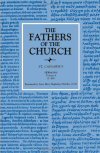
Administrator, theologian, and preacher, Caesarius of Arles provides preaching typical of the age on the abandonment of vices and the pursuit of virtues. In 80 sermons, he addresses aspects of the ancient life in issues of morality and dogma, drawing from the Church Fathers before him. Recognizing the great need for solid content in preaching, he learned the craft of preaching from the writings of the Fathers and Doctors of the Church, drew up his own sermons, and disseminated them to learning clergy and priests under his tutelage.
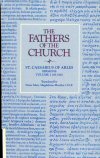
Sermons, vol. 2 (81–186)
- Author: Saint Caesarius
- Translator: Mary Magdeleine Mueller
- Series: Fathers of the Church
- Publisher: Catholic University of America Press
- Publication Date: 1964
- Pages: 508
This volume contains one hundred and ten sermons attributed to St. Caesarius bishop of Arles for forty years (502–542). He is reputed to have been an outstanding spiritual leader presiding at some important synods in Gaul and perhaps second only to St. Augustine a most diligent and effective preacher. This reputation most probably accounts for the large number of sermons attributed to him.
In 1937, Dom Germain Morin, after some 50 years of exacting research published the Caesarean corpus of sermons. His studies led him to question in varying degrees the Caesarean authorship of 54 sermons in this volume which are therefore marked with an asterisk.
In 1971, Marie-José Delage published the results of a more recent study on the Caesarean sermons. The work of Delage indicates that Caesarius must have had access to a good collection of homilies from which he borrowed freely and frequently without ever mentioning the source. At the time of Caesarius this was not an unusual practice. The most frequently used author, as one might suspect, is St. Augustine. This usage ranges from using a complete sermon to which are added a simple introduction and appropriate conclusion, to quotations chosen from the several Augustinian sermons. Other authors used by Caesarius are: Origen (in Latin translation), Ambrose, Eusebius, Quodvultdeus and Cyprian.
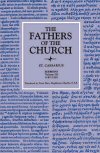
Sermons, vol. 3 (187–238)
- Author: Saint Caesarius
- Translator: Mary Magdeleine Mueller
- Series: Fathers of the Church
- Publisher: Catholic University of America Press
- Publication Date: 1972
- Pages: 311
The present volume completes the presentation of the homiletic works of Caesarius begun in 1956. Following upon the "Admonitions" and the sermons on Scripture contained in the first two volumes, Volume III presents the seasonal sermons, those on feasts of saints, and six addressed to monks. There is added the translation of a sermon published in 1953 and known only by title to Dom G. Morin, upon whose edition (1937–1942) these volumes are based. An Appendix supplies additional notes relating to the sources of the sermons contained in Volumes I and II, as well as the Indices to all three volumes.
As in the translation contained in Volumes I and II (FC 31, 47) moral counsel predominates. The sermons preached to the monks show a Caesarius who accommodates to those especially dedicated Christians an appeal for the avoidance of vices and the pursuit of virtue that more commonly he directs to layfolk. His fervid exhortation is not without its message to those men and women of today who will hear it.
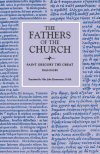
Dialogues
- Author: Saint Gregory the Great
- Translator: Odo John Zimmerman
- Series: Fathers of the Church
- Publisher: Catholic University of America Press
- Publication Date: 1959
- Pages: 303
Gregory the Great was known as an intellectual, administrative, and spiritual giant. While providing for the temporal needs of the Church during his pontificate (590–604), he wrote the Dialogues to take care of the eternal welfare of his people. In four books, the Dialogues honors the memory of the saints of Italy through the first three, and in the fourth, discusses the immortality of the human soul.
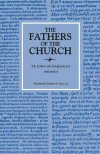
Writings
- Author: Saint John of Damascus
- Translator: Frederic H. Chase, Jr.
- Series: Fathers of the Church
- Publisher: Catholic University of America Press
- Publication Date: 1958
- Pages: 475
St. John of Damascus (ca. 675–749) is generally regarded as the last great figure of Greek Patrology. Outstandingly important for his support of images in the Iconoclastic Controversy, this priest-monk of St. Sabbas near Jerusalem is known also for his treatment of Christian morality and asceticism (the Sacred Parallels), for a small but precious group of powerful sermons, and even for verse contributions to the Greek liturgy. His reputation rests mainly, however, on one of his latest writings, the Fount of Wisdom. This relatively brief work is called by the late Fr. Chase, its new translator, “the first real Summa Theologica”; and its most significant section was in fact known, in Latin translation, to Peter Lombard and St. Thomas Aquinas.
The first part of the Fount of Wisdom, “Philosophical Chapters” (“Dialectica”), goes back to Aristotle mainly and, through Maximus the Confessor, to Plato. Epiphanius is the chief source of Part Two, with its exposition of 103 heresies. The third and most important section of the work, “On the Orthodox Faith,” is a comprehensive presentation of the teaching of the Greek Fathers on the main doctrines of Christianity, especially the Trinity, Creation, and the Incarnation. But what emerges is not a compilation but rather a synthesis, marked by originality in the mode of treatment and by a remarkable clarity of expression. In all three of its parts the Damascene’s Fount of Wisdom is “an indispensable aid to the study of the Greek Christian tradition.”
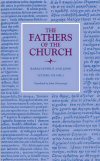
Letters, vol. 1
- Authors: Barsanuphius and John
- Translator: John Chryssavgis
- Series: Fathers of the Church
- Publisher: Catholic University of America Press
- Publication Date: 2006
- Pages: 359
The complete text of the Letters of Barsanuphius and John appears here in English for the first time. John Chryssavgis’s faithful and deft translation brings vividness and freshness to the wisdom of a distant world, ensuring its accessibility to contemporary readers. Addressed to local monastics, lay Christians, and ecclesiastical leaders, these remarkable questions and responses (850 of them) offer a unique glimpse into the sixth-century religious, political, and secular world of Gaza and Palestine during a period torn by doctrinal controversy and in a context shaped by the tradition of the early desert fathers.
The “great old man,” Barsanuphius, and the “other old man,” John, flourished near Gaza around the early sixth century. Choosing to dwell in complete isolation, they saw no one with the exception of their secretaries, Seridos and the well-known Dorotheus of Gaza. Barsanuphius and John communicated in silence through letters with numerous visitors who approached them for counsel. Curiously, this inaccessibility became the very reason for the popularity of the elders. They formed an extraordinarily open system of spiritual direction, which allowed space for conversation and even conflict in relationships, while also accounting for the wisdom and the wit of the correspondence.
Barsanuphius’s inspirational advice responds to problems of a more spiritual nature; John’s institutional advice responds to more practical problems. The two elders in fact complement one another, together maintaining a harmonious authority-in-charity. Their letters are characterized by spontaneity and sensitivity, as well as by discretion and compassion. They stress ascetic vigilance and evangelical “violence,” gratitude and joy, humility and labor, prayer and tears.

Letters, vol. 2
- Authors: Barsanuphius and John
- Translator: John Chryssavgis
- Series: Fathers of the Church
- Publisher: Catholic University of America Press
- Publication Date: 2007
- Pages: 361
The second volume of the Letters of Barsanuphius and John completes the collection of these monastic writings, which provided both spiritual and practical advice to a variety of sixth-century interlocutors from diverse walks of life. The two anchorites, having settled in an isolated location near Gaza, were in demand as trusted counselors, responding to questions on topics ranging from relationships within monasteries to problems of municipal taxation. Barsanuphius, the “great old man,” and John, the “other old man,” fulfilled their time-honored role as resident holy men in their locality, leaving behind a wealth of monastic wisdom as well as inspiration for all Christians.
Distinctive to this volume are many colorful letters that will attract the interest of historians of this period. Some of these are responses to inquiries about specific problems of mundane life, such as veterinary treatment for a horse, the leprous disease of a household servant, and vandalism in a vineyard. Of broader applicability is the advice regarding such issues as the replacement of an unworthy bishop, the management of alms donated for the poor, and the quality of public entertainment in faraway Constantinople. The religious diversity of the Gaza region at this time, a century before the advent of Islam, generated questions about how Christians should interact with Jewish, pagan, and Manichaean fellow citizens.
Abundant also are insights into the human heart. Barsanuphius and John offer timeless teachings on the inner warfare against resentful thoughts, temptations, doubts, anxieties, and reluctance to surrender oneself trustfully to God. They examine the human foibles arising from relationships among monks, and between monks and abbots, with a serene clarity resulting from these holy men's long experience with the introspective asceticism of the desert.
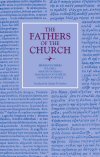
Iberian Fathers, vol. 1: Writings of Martin of Braga, Paschasius of Dumium, and Leander of Seville
- Translator: Claude W. Barlow
- Series: Fathers of the Church
- Publisher: Catholic University of America Press
- Publication Date: 1969
- Pages: 261
In this volume, The Fathers of the Church returns to the Christian Latin writers of the Iberian Peninsula, hitherto represented only by Orosius (Vol. 50) and Prudentius (Vols. 43, 52).
What is now Portugal embraces Braga, the sec-city of Martin, Pannonian-born missionary. While abbot of nearby Dumium, Martin had a pupil Paschasius, whose Questions and Answers of the Greek Fathers has never before been translated complete in any language. To what is now Spain belongs the third author in the volume, Leander, future bishop of Seville, where he was succeeded by his more famous and more prolific brother, Isidore. As with Paschasius, the works of Leander of Seville and of Martin of Braga are translated complete, many for the first time. The subjects range widely and include ethics (with the doctrine sometimes coming from Seneca or other pre-Christian writers), pastoral and ascetical theology, monastic discipline, liturgy, and the computation of the date of Easter.
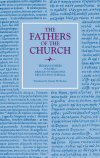
Iberian Fathers, vol. 2: Writings of Braulio of Saragossa and Fructuosus of Braga
- Translator: Claude W. Barlow
- Series: Fathers of the Church
- Publisher: Catholic University of America Press
- Publication Date: 1969
- Pages: 248
In this second volume of translations from the Iberian Fathers appear the works of two seventh-century writers. From the first of these, bishop Braulio of Saragossa, a figure in Visigothic literature second only to St. Isidore of Seville, comes an extensive collection of letters. These are variously addressed to Isidore himself, to other ecclesiastics, to Pope Honorius, and to King Receswinth; friends and relatives were the recipients of seven letters of consolation. Braulio’s letters are joined by the Life of a near contemporary, St. Emilian, and by a valuable list of the writings of Isidore, under whom Braulio studied. Fructuousus of Braga is represented by two monastic rules. The first of these was composed for Compludo, a foundation made by Fructousus himself; the other rule is a general or common one. Two other writings dealing with monastic practice accompany these rules, together with a letter to King Receswinth.
Nearly all of the material presented here by professor Barlow is new to English readers, and all of it offers a lively and wide-ranging insight into conditions prevailing in the seventh century among the people, lay, clerical, and religious, of what later became Spain and Portugal.
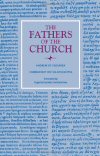
Commentary on the Apocalypse
- Author: Andrew of Caesarea
- Translator: Eugenia Scarvelis Constantinou
- Series: Fathers of the Church
- Publisher: Catholic University of America Press
- Publication Date: 2011
- Pages: 284
The early seventh-century Roman Empire saw plague, civil war, famine, and catastrophic barbarian invasions. Eschatological fervor ran high, as people were convinced that the end of the world was near. In this climate, a noteworthy Greek commentary on the Apocalypse was composed by Andrew, Archbishop of Caesarea, Cappadocia.
In 611, Andrew of Caesarea applied his superior exegetical skills to the challenging Book of Revelation and concluded that the end was not near, in spite of the crises that the empire was facing. Striking a balance between the symbolic language of the book and its literal, prophetic fulfillment, Andrew’s interpretation is a remarkably intelligent, spiritual, and thoughtful commentary that encourages the pursuit of virtue and confidence in the love of God for humanity.
Standing in the stream of patristic tradition, Andrew wove together pre-existing written and oral interpretations of Revelation passages by earlier Fathers and anonymous teachers, drawing together various interpretive strands and pointing to a previously unknown rich tradition of Apocalypse interpretation in the Greek East. His commentary also influenced the textual transmission of the Apocalypse and created a unique text type. Andrew’s commentary quickly eclipsed that of Oikoumenios to become the predominant and standard patristic commentary for the Greek East as well as the Slavic, Armenian, and Georgian Churches. Andrew influenced Eastern Christian eschatology and is responsible for the eventual acceptance of Revelation into the canon of the Oriental and Eastern Orthodox Churches.
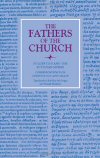
Fulgentius and the Scythian Monks: Correspondence on Christology and Grace
- Author: Fulgentius
- Series: Fathers of the Church
- Publisher: Catholic University of America Press
- Publication Date: 2013
- Pages: 260
St. Fulgentius of Ruspe was perhaps the most brilliant North African theologian in the era after St. Augustine’s death. He wrote widely on theological and moral issues. Between the years AD 519 and 523, Fulgentius engaged in correspondence with a group of Latin-speaking monks from Scythia, and that correspondence is translated into English—almost all of it for the first time—in this volume.
The correspondence is significant because it stands at the intersection of two great theological discussions: the primarily Eastern Christological controversies between the Fourth Ecumenical Council in 451 and the Fifth in 553, and the largely Western Semi-Pelagian controversy, which ran from 427 to the Second Synod of Orange in 529. Contemporary Western scholars normally treat these controversies over Christ and grace separately, but there were noteworthy points of contact between the two discussions, and Fulgentius and the Scythian monks were the ones who drew the connections between Christology and grace most strongly.
These connections suggest that we today may do well to treat Christology and grace more as two sides of the same coin than as separate theological issues. Both sets of issues deal fundamentally with the relation between God and humanity: Christological questions ask how the divine and human are related in the person of the Savior, and grace-related questions ask how the divine and human are linked in the conversion, Christian life, and final salvation of each Christian. Thus, Fulgentius’s correspondence with the Scythian monks can do more than simply aid understanding of sixth-century Byzantine/Roman theology. It can also contribute to our contemporary thinking on the relation between two of the Christian faith's most central doctrines.
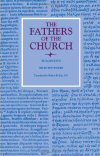
Selected Works
- Author: Fulgentius
- Translator: Robert B. Eno
- Series: Fathers of the Church
- Publisher: Catholic University of America Press
- Publication Date: 1997
- Pages: 601
Fulgentius, bishop of Ruspe (ca. 467–532), is considered the greatest North African theologian after the time of St. Augustine. When Fulgentius was born, North Africa had been under the rule of Germanic Vandals for several decades. His family was repeatedly victimized by Vandal persecutions, and Fulgentius himself suffered persecution and exile. While in exile, he continued his pastoral labors and became the theological spokesman of the displaced. Though he was not an original thinker, he propagated the Augustinian heritage and defended it against its adversaries, notably the Arians and Pelagians (or semi-Pelagians).
With thorough understanding and conviction, Fulgentius promoted the Trinitarian theology of Augustine. He also defended and explained Augustine's difficult and controversial stance on the question of predestination. Fulgentius contributed greatly to the transmission and interpretation of a theological heritage that would dominate and shape the Church in the West for hundreds of years to come.
Unfortunately, many of Fulgentius’s writings have been lost. Of those that have survived, the most important are dated to the period of his second exile and the sixteen years from his return to North Africa from Sardinia until his death. This volume gives English readers for the first time an opportunity to study a representative selection of the writings of this early sixth-century author. It also presents Fulgentius's biography, the Life, for the first time in English.
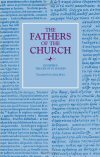
The Life of St. Severin
- Author: Eugippius
- Translator: Ludwig Bieler
- Series: Fathers of the Church
- Publisher: Catholic University of America Press
- Publication Date: 1965
- Pages: 142
The idea of writing about St. Severin, so Eugippius tells us, came to him as he witnessed the success of a Life, in letter-form, of the monk, Bassus, who had died—recently, it seems—in the south of Italy. The Letter, the work of a layman, was circulated privately, and a number of people took copies. Eugippius and his community thought the miracles of their founder should be made known in a similar way. On hearing this, the biographer of Bassus offered his services and approached Eugippius for information. Eugippius, however, had his misgivings, which were probably aroused by an unknown layman’s Letter about Bassus. Eugippius feared that the work would be written in such an elaborate style as to be almost unintelligible to ordinary readers; and, to judge from the literary fashion of the times, such fears were not unfounded. Eugippius, therefore, drafted a sketch of Severin’s life and miracles, and sent it to Paschasius, one of the seven deacons of the Church of Rome, and author of a work on the Holy Ghost, which later won the approval of Pope Gregory the Great. Eugippius asked Paschasius to turn his sketch into a book of such form and style as its subjects would demand. This request, it seems, was not meant too seriously. Paschasius in his reply politely declined the offer on the grounds that the ‘draft’ of Eugippius served its purpose excellently, and that nothing could be gained by greater elaboration. Eugippius' Memorandum is certainly anything but ‘casual;’ he uses rhetoric deliberately, though in moderation; he observes the rules of prose rhythm; he is aware of certain demands of composition inherent in a literary genre. Eugippius probably meant to ask Paschasius, a high-standing and influential churchman, to write—as we would say nowadays—a ‘Foreword’ that would give his work a wider circulation. Paschasius’ reply, with its highly complimentary remarks, may then be regarded as a response to Eugippius’ polite intimation.
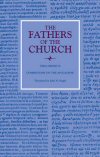
Commentary on the Apocalypse
- Author: Oecumenius
- Translator: John N. Suggit
- Series: Fathers of the Church
- Publisher: Catholic University of America Press
- Publication Date: 2006
- Pages: 228
This is the first complete translation in English of Oecumenius’s commentary, which is the first known Greek commentary on the book of Revelation. Written in the sixth century but discovered only at the beginning of the twentieth, it presents a fascinating view of a writer who strove to be faithful to the teaching of the church while at the same time allowing his imagination to make sense of the stories and visions of Revelation. In interpreting the events surrounding the destruction of the wicked he shows sensible pastoral restraint and refuses to be swayed by the dogmatic certainty shown even by some modern interpreters.
The short introduction to the translation by John N. Suggit provides a brief account of the identity of the author and the theological issues with which he was involved, especially the controversy over the beliefs of Origen and his followers.
The study is particularly interesting today when the words of Scripture are often interpreted literally without the poetic and dramatic quality which alone gives them true life. The book therefore should be of interest not only to serious scholars, but also to those who are ready to listen to this New Testament book not as a record of past history but as the description of the drama of life today.